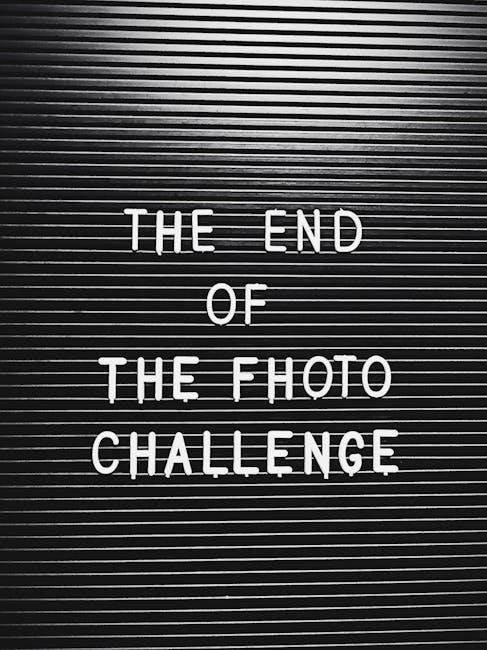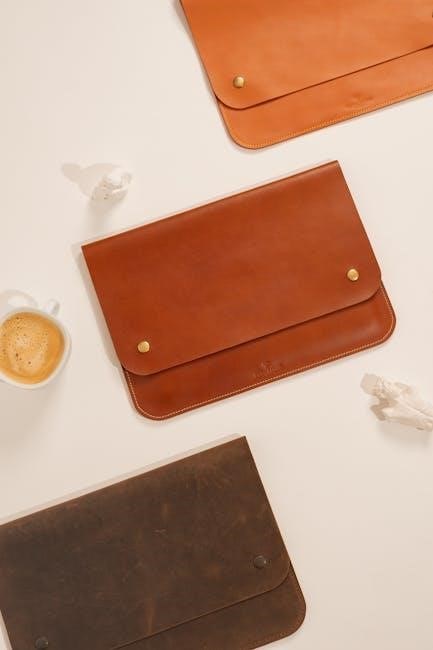A Beginning, Middle, End Graphic Organizer is a visual tool designed to help students structure stories into three clear sections․ It aids in reading comprehension, writing skills, and idea organization, proving invaluable for both teachers and students․ Available as a PDF, it’s an essential educational resource․
What is a Beginning, Middle, End Graphic Organizer?
A Beginning, Middle, End Graphic Organizer is a visual learning tool designed to help students structure stories into three clear sections․ It provides a framework for retelling stories, summarizing events, and organizing ideas․ Available as a PDF or digital template, it supports reading comprehension, storytelling, and writing skills by breaking narratives into distinct parts for better understanding and analysis․
Importance of Using Graphic Organizers in Education
Graphic organizers are essential tools in education, fostering visual learning and improved comprehension․ They help students structure information, making complex concepts more accessible․ By using beginning, middle, end templates, students can better grasp story structures, identify main ideas, and organize details․ These tools enhance reading comprehension, writing skills, and critical thinking, making them invaluable for diverse learning needs and curriculum alignment․

Types of Beginning, Middle, End Graphic Organizers
These organizers are available in lined and unlined versions, catering to different writing preferences․ Visual and text-based templates also exist, offering flexibility for various learning styles and needs․
Lined and Unlined Versions
Lined versions provide structured spaces for writing, ensuring ideas are neatly organized․ Unlined versions offer creative freedom, enabling students to express thoughts without rigid boundaries․ This flexibility allows teachers to cater to diverse learning styles, making the graphic organizer adaptable for various educational needs and projects, enhancing both writing and creative tasks effectively․
Visual and Text-Based Templates
Visual templates incorporate images, charts, and diagrams to engage students, making the learning process interactive․ Text-based templates focus on written descriptions, allowing for detailed summaries․ These formats cater to different learning preferences, ensuring that students can effectively organize their thoughts and ideas, whether they prefer visual or textual representations of information and stories․
Benefits of Using a Beginning, Middle, End Graphic Organizer
Enhances reading comprehension, storytelling, and writing skills by organizing ideas logically․ Helps students structure narratives clearly, improving understanding and retention of story components effectively․
Improved Reading Comprehension
Using a Beginning, Middle, End Graphic Organizer enhances students’ ability to analyze and understand stories․ By breaking narratives into clear sections, students can identify key events, characters, and settings․ This structure helps them summarize and retain information more effectively, fostering deeper comprehension and engagement with the text․
Enhanced Storytelling and Writing Skills
A Beginning, Middle, End Graphic Organizer helps students develop storytelling and writing skills by guiding them to structure narratives effectively․ It encourages clear introductions, detailed plot development, and strong conclusions․ This tool teaches students to organize ideas logically, promoting creativity and coherence in their writing․ Teachers use it to help students master plot structure and character development, making it a valuable resource for fostering writing proficiency․
Better Organization of Ideas
Using a Beginning, Middle, End Graphic Organizer improves students’ ability to organize ideas cohesively․ It provides a clear structure, helping students categorize events, characters, and settings into distinct sections․ This tool ensures that students can visually map out their thoughts, reducing confusion and enhancing their ability to present information logically․ It is particularly effective for teaching narrative structure and planning in writing tasks․
How to Use a Beginning, Middle, End Graphic Organizer
A Beginning, Middle, End Graphic Organizer helps students structure stories by identifying key sections․ Teachers guide students in planning, organizing ideas, and summarizing effectively, enhancing reading comprehension and writing skills․
Step-by-Step Guide for Teachers
- Distribute the Beginning, Middle, End Graphic Organizer PDF to students․
- Guide students in identifying the story’s key sections: beginning, middle, and end․
- Encourage students to summarize each section concisely․
- Allow time for reflection and discussion to clarify concepts․
- Provide feedback to help students refine their understanding and writing․
How Students Can Effectively Use the Organizer
Students can use the Beginning, Middle, End Graphic Organizer PDF by first reading a story carefully․
- They summarize the beginning, highlighting key events and characters․
- In the middle section, they outline the main conflict or turning points․
- The end section is for wrapping up the story and its resolution․
- Students can use lined versions for writing or unlined for drawing scenes․
- Visual elements like drawings reinforce understanding for visual learners․
- Reflecting on summaries improves comprehension and retention․
- Regular use helps students master story structure and organization skills․

Digital Versions and PDF Formats
Digital versions of the organizer, including PDF templates, offer flexibility for educators and students․ PDFs are easy to print and share, making them ideal for classroom use․
Google Slides and other digital tools allow interactive use, enabling students to type or draw directly on the organizer, enhancing engagement and accessibility․
Advantages of PDF Templates
PDF templates for the Beginning, Middle, End Graphic Organizer are versatile and widely accessible․ They are easy to print, share, and use across multiple devices․ PDFs maintain consistent formatting, ensuring clarity and readability․ Educators can customize them while retaining the structure, making them ideal for various classroom needs․ Their compatibility with digital tools like Google Slides further enhances their utility, providing flexibility for both teachers and students․
Google Slides and Other Digital Tools
Google Slides offers interactive and collaborative features, allowing students and teachers to edit graphic organizers in real-time․ Digital tools provide flexibility, enabling customization and easy sharing․ They support dynamic learning environments, making it simpler for educators to adapt the organizer to different teaching styles and student needs, enhancing engagement and accessibility in the classroom․
Designing Your Own Custom Organizer
Custom organizers allow educators to tailor templates to specific learning needs, incorporating visuals and adaptable structures․ Teachers can create unique layouts for varied activities, enhancing student engagement and understanding through personalized design approaches that cater to different learning styles and curriculum requirements․
Tips for Educators
Encourage educators to select templates that align with student needs, such as lined versions for older students and unlined for younger ones․ Demonstrate how to fill out the organizer step-by-step, ensuring clarity․ Incorporate visual elements to engage visual learners and foster creativity․ Encourage peer discussions to enhance collaborative learning․ Provide examples of completed organizers to guide students․ Align the tool with curriculum standards to ensure relevance․ Offer feedback to help students refine their work and understand expectations․ Use digital tools like Google Slides for interactive lessons and easy sharing․ Make the organizer adaptable to different subjects and learning objectives, ensuring versatility․ Monitor progress to identify areas where students may need additional support․ Celebrate student successes to build confidence and motivation․ Regularly update and refresh templates to keep lessons engaging and dynamic․ Encourage students to use organizers for both reading comprehension and creative writing, promoting a well-rounded skill set․ Provide opportunities for students to reflect on their learning, fostering metacognition and self-improvement․ Collaborate with colleagues to share best practices and resources, enhancing the educational community․ Stay updated on new tools and technologies to continuously improve teaching methods․ Foster a positive and supportive learning environment where students feel comfortable expressing their ideas․ Use the organizer as a formative assessment tool to track student progress and adjust instruction accordingly․ Encourage students to use organizers for planning and organizing their thoughts before writing, improving the writing process․ Provide additional support for students who struggle with organization, ensuring equity in learning․ Use the organizer to teach key concepts like sequence of events, character development, and plot structure․ Encourage students to use organizers for summarizing and retelling stories, enhancing reading comprehension․ Make the organizer a routine part of lessons to help students develop consistent organizational habits․ Use the organizer to differentiate instruction, catering to the diverse needs of all learners․ Encourage students to use organizers for brainstorming and idea generation, fostering creativity․ Provide opportunities for students to share their completed organizers with the class, promoting confidence and public speaking skills․ Use the organizer as a tool for formative and summative assessments, providing a comprehensive view of student learning․ Encourage students to use organizers for planning and organizing their thoughts before writing, improving the writing process․ Provide additional support for students who struggle with organization, ensuring equity in learning․ Use the organizer to teach key concepts like sequence of events, character development, and plot structure․ Encourage students to use organizers for summarizing and retelling stories, enhancing reading comprehension․ Make the organizer a routine part of lessons to help students develop consistent organizational habits․ Use the organizer to differentiate instruction, catering to the diverse needs of all learners․ Encourage students to use organizers for brainstorming and idea generation, fostering creativity․ Provide opportunities for students to share their completed organizers with the class, promoting confidence and public speaking skills․ Use the organizer as a tool for formative and summative assessments, providing a comprehensive view of student learning․ Encourage students to use organizers for planning and organizing their thoughts before writing, improving the writing process․ Provide additional support for students who struggle with organization, ensuring equity in learning․ Use the organizer to teach key concepts like sequence of events, character development, and plot structure․ Encourage students to use organizers for summarizing and retelling stories, enhancing reading comprehension․ Make the organizer a routine part of lessons to help students develop consistent organizational habits; Use the organizer to differentiate instruction, catering to the diverse needs of all learners․ Encourage students to use organizers for brainstorming and idea generation, fostering creativity․ Provide opportunities for students to share their completed organizers with the class, promoting confidence and public speaking skills․ Use the organizer as a tool for formative and summative assessments, providing a comprehensive view of student learning․
Incorporating Visual Elements
Incorporate images, icons, and colors to make the organizer visually engaging․ Use a timeline or infographic to show story progression․ Add sketch boxes for students to draw scenes․ Utilize digital tools for interactive elements and customizable templates․ Align with dual coding theory to enhance learning․ Cater to visual learners and diverse classroom needs․ Ensure resources are accessible for teachers to create and customize effectively․

Real-World Applications
The organizer is widely used for reading comprehension, storytelling, and writing projects․ It helps students structure ideas and analyze story elements effectively in educational settings․
Using the Organizer for Reading Comprehension
The organizer aids students in understanding story structure by summarizing the beginning, middle, and end․ It helps identify key events, enhancing comprehension and retention․ Teachers use it to guide discussions, while students benefit from visualizing the narrative flow, making it easier to retell stories and analyze plot development effectively․
Applications in Creative Writing
The Beginning, Middle, End Graphic Organizer is a valuable tool for creative writing, helping students brainstorm and organize ideas․ It provides a clear structure for narratives, guiding the development of engaging plots and characters․ Available as both digital and printable PDFs, it offers flexibility for students to plan and outline their stories effectively․

Classroom Integration
Teachers can integrate Beginning, Middle, End Graphic Organizers into lessons to enhance reading and writing skills, supported by both digital and printable PDF versions for flexibility․
How Teachers Can Implement the Organizer
Teachers can introduce the concept of story structure by distributing the PDF template, guiding students to summarize the beginning, middle, and end of a text․ Encourage the use of both digital and printable versions, allowing students to choose their preferred format․ Provide examples and demonstrations to help students understand how to effectively organize their ideas․ Regular practice and feedback sessions can reinforce their learning and improve retention․
Aligning with Curriculum Standards
The Beginning, Middle, End Graphic Organizer aligns with curriculum standards by enhancing reading comprehension, writing skills, and critical thinking․ It helps students break down stories into clear sections for summarizing and understanding plot structure․ The organizer also aids in identifying main events and recognizing cause-and-effect relationships, all of which are key educational objectives․ By using this tool, educators can ensure they are meeting curriculum standards effectively․

Free Resources and Templates
Free Beginning, Middle, End Graphic Organizer PDFs are widely available online, offering lined and unlined versions for students to organize ideas effectively for stories or summaries․
Where to Find Printable PDFs
Printable PDFs for Beginning, Middle, End Graphic Organizers are available on educational websites, teacher resource platforms, and Google Slides․ Popular sites include Teachers Pay Teachers, Reading Comprehension Worksheets, and Story Structure resources․ These templates are customizable, user-friendly, and suitable for various grade levels, providing flexibility for teachers and students to enhance learning and organization skills effectively․
Free Digital Tools and Websites
Free digital tools and websites like Google Slides, Teachers Pay Teachers, and Reading Comprehension Worksheets offer downloadable Beginning, Middle, End Graphic Organizer templates․ These platforms provide customizable PDFs and interactive designs, making it easy for educators to integrate them into classroom activities․ They cater to diverse learning needs, ensuring accessibility and flexibility for both teachers and students․

Assessment and Feedback
Using a Beginning, Middle, End Graphic Organizer allows teachers to assess student progress effectively․ It provides a structured format for offering clear, constructive feedback, enhancing learning outcomes and understanding of story structure․
Evaluating Student Progress
Evaluating student progress with a Beginning, Middle, End Graphic Organizer involves assessing their ability to identify and summarize key story events․ Teachers can review completed organizers to gauge comprehension of plot structure and writing skills․ This tool also helps track improvements in organizing ideas and understanding narrative flow, ensuring alignment with curriculum standards and individual learning goals․
Providing Constructive Feedback
Constructive feedback is crucial for helping students improve their use of the graphic organizer․ Teachers should highlight strengths, such as accurate summaries of the beginning, middle, and end, while suggesting areas for improvement, like adding more details or clarifying vague sections․ This feedback loop encourages students to refine their understanding of story structure and enhance their writing and comprehension skills effectively․
The Beginning, Middle, End Graphic Organizer PDF is a valuable resource for enhancing reading comprehension and writing skills, benefiting both students and educators effectively․
Final Thoughts on the Importance of Graphic Organizers
Graphic organizers like the Beginning, Middle, End template are invaluable for fostering critical thinking, creativity, and analytical skills in students․ By visually structuring information, they enhance comprehension and writing abilities, making complex concepts accessible․ Their versatility in both PDF and digital formats ensures they meet diverse learning needs, supporting educators in aligning with curriculum standards and promoting lifelong learning effectively․
Encouraging Lifelong Learning Through Organization
Graphic organizers like the Beginning, Middle, End template empower students to develop essential skills in organization, critical thinking, and creativity․ By providing a structured framework, they foster a deeper understanding of stories and concepts, encouraging independent learning and effective communication․ These tools not only enhance academic performance but also cultivate habits of mind that support lifelong learning and personal growth across various subjects and real-world applications․
